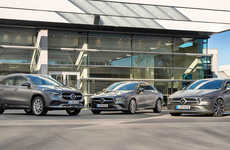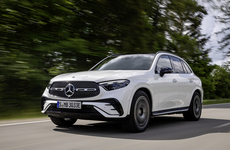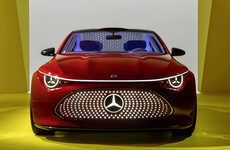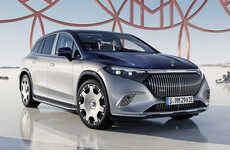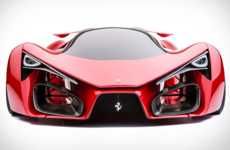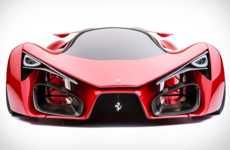
The Mercedes GLC is a Premium SUV That is Truly Eco-Friendly
Rahul Kalvapalle — June 22, 2015 — Autos
References: mercedes-benz & gizmag
The Mercedes GLC is a mid-size roadster that is designed to be a direct competitor to fellow German vehicular offerings the BMW X3 and the Audi Q5. This vehicle features several design cues from the GLC Coupe, and is significantly longer and wider than its predecessor the GLK.
The most eco-friendly configuration of the Mercedes GLC is the GLC 350e plug-in hybrid vehicle, which can cover an impressive 34 km in all-electric mode. Thanks to its combined 327 horsepower system, this vehicle is capable of hitting a speed of 100 km/h in only 5.9 seconds, and can hit a top speed of 235 km/h. The vehicle also offers the Dynamic Select system which allows drivers to lower the suspension.
Finally, carbon dioxide emissions of 60 grams/km mean this vehicle's environmentally friendly setup cannot be questioned.
The most eco-friendly configuration of the Mercedes GLC is the GLC 350e plug-in hybrid vehicle, which can cover an impressive 34 km in all-electric mode. Thanks to its combined 327 horsepower system, this vehicle is capable of hitting a speed of 100 km/h in only 5.9 seconds, and can hit a top speed of 235 km/h. The vehicle also offers the Dynamic Select system which allows drivers to lower the suspension.
Finally, carbon dioxide emissions of 60 grams/km mean this vehicle's environmentally friendly setup cannot be questioned.
Trend Themes
1. Eco-friendly Vehicles - The trend of eco-friendly vehicles presents an opportunity for disruptive innovation in the automotive industry through the development of more sustainable and energy-efficient transportation options.
2. Plug-in Hybrid Technology - The rise of plug-in hybrid technology opens up possibilities for disruptive innovation in the automotive industry by combining the benefits of electric and traditional combustion engines.
3. Dynamic Suspension Systems - The advancement of dynamic suspension systems creates an opportunity for disruptive innovation in the automotive industry by providing improved ride comfort and handling capabilities.
Industry Implications
1. Automotive - The automotive industry can leverage the trend of eco-friendly vehicles to introduce disruptive innovations that address sustainability concerns and meet consumer demand for greener transportation options.
2. Electric Vehicles - The electric vehicle industry can take advantage of the plug-in hybrid technology trend to develop disruptive innovations that enhance the overall performance and range of electric cars.
3. Automotive Engineering - The field of automotive engineering can explore the potential of dynamic suspension systems to create disruptive innovations that optimize vehicle dynamics, stability, and comfort.
1.7
Score
Popularity
Activity
Freshness


